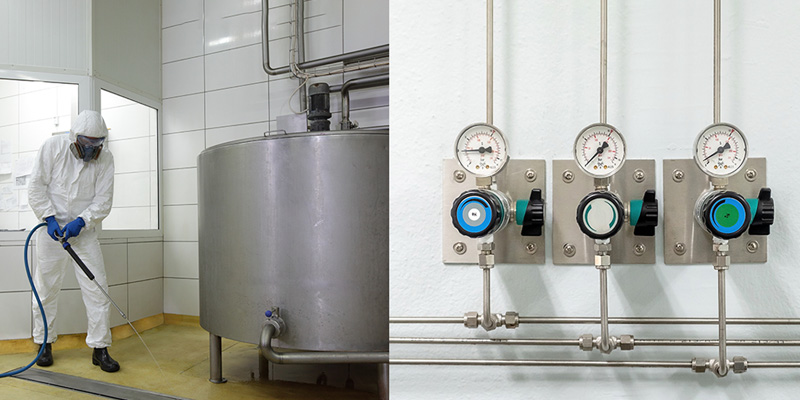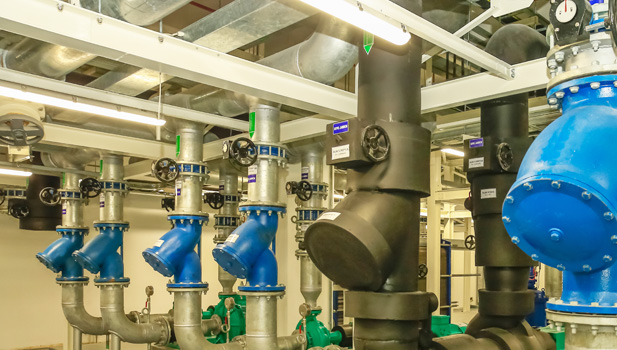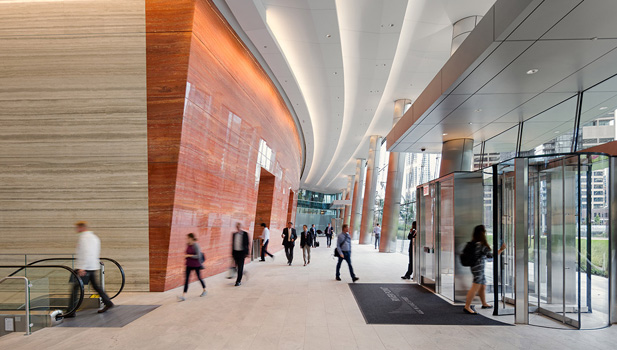Environmental Consulting
Noise and Vibration
In an era where environmental nuisance noise and vibration are becoming increasingly regulated by federal, state, and local agencies, Trinity leads the market in noise and vibration services. Offering advanced assessments, precise modeling, and effective mitigation strategies, we ensure businesses meet stringent regulatory standards, equipping clients to enhance community relations and operational efficiency.
Trinity provides a wide range of noise and vibration services, including the following:
- Industrial noise impact assessments
- Ambient sound and vibration measurement and characterization
- Federal, state, and local noise standard compliance planning and verification
- Background noise studies
- Noise and vibration propagation modeling
- Siting studies for new plants and expansions
- NEPA Environmental Assessments (EA) noise reports
- FERC Resource Report 9 noise section preparation
- Noise impact mitigation assistance
- Building and architectural acoustics
- Occupational noise monitoring, mapping, and mitigation design
Facilities and emission sources for which we have performed noise and vibration assessments include the following:
- Stationary reciprocating and combustion-turbine powered electrical generating systems
- Many types of manufacturing facilities
- Natural gas compressor stations and storage facilities
- Reciprocating engines, turbines, cooling systems, dehydrators, pressure reduction valves, and vents, substations, etc., at natural gas compressor stations
- Construction projects involving heavy equipment
- Horizontal directional drilling and salt cavern development activities
- Mining and extractive industries
- Sporting and music venues
- Educational and health facilities
- Transportation projects including road, rail, air, and shipping
How Else We Can Help
Related Services

Industrial Hygiene and Occupational Safety
Trinity has many years of experience serving clients’ industrial hygiene needs in chemical, pharmaceutical, biotechnology, food product, and laboratory workplaces.
Health Risk Assessment
Trinity is the industry leader in air dispersion modeling studies, population exposure assessments, health risk characterizations, ambient monitoring and related air toxics work.Our Results
Featured Projects

Frazier Collaborates with Trinity Consultants to “Green Light” Compliance for Plant Operations and Expansions
Trinity has supported Frazier's multimedia environmental compliance reporting since 2017 across five states and multiple facilities.
Government Steam Plant Streamlines Environmental Permitting and Compliance
The plant has engaged Trinity since 2008 for a wide variety of continual compliance activities that span air, oil pollution, waste, and water programs.
Enhancing Acoustic Environments with Cerami’s Site Assessment Services
Cerami’s expansion into site assessment services demonstrates its commitment to meeting the evolving needs of clients.
Office Tower Surrounded by Rail Lines Ensures a Premium Acoustical Environment
Cerami, which had already partnered on several developments with the project team, was engaged to provide acoustic consulting services for the site.Regulatory Background
Noise and Vibration Services Overview
Who May Need Noise and Vibration Services and Why?
What is Noise and Vibration?
Noise and vibration are inherent to industrial, commercial, entertainment, and transport activities. Sources of noise can include:
- Fans and exhausts and other industrial control systems
- Vehicle operations including loading and unloading
- Baghouses and pollution control equipment
- Rotating crushers and other machinery
- Material handling processes
- Generators, motors, engines, and turbines;
- Steam and gas venting and pressure drops in piping systems
- Transport including road, rail, air, and shipping
- Entertainment noise including music and crowd noise
- Commercial operations including mechanical plant, car parking, and loading docks
Who needs Noise and Vibration Services?
Environmental nuisance noise and vibration are becoming increasingly regulated by federal, state, and local agencies. For example, certain natural gas projects under the jurisdiction of the Federal Energy Regulatory Commission (FERC) are required to conduct detailed ambient noise measurements and noise impact analyses at sensitive areas to demonstrate compliance with federal noise standards. Increasingly more municipalities are adopting noise ordinances that set technical noise standards at plant fence lines and residential receptors. Failure to comply with these standards can lead to community relations issues and potential lawsuits.
How Trinity Can Help
Trinity Consultants assists clients with noise and vibration in a variety of ways:
Predicting Noise Impacts
Trinity can predict the impact of noise sources at fence lines and noise-sensitive areas using both vector modeling software packages (e.g., CadnaA and SoundPLAN) and our workbook-based calculation tools. Vector modeling software enables accounting for complex scenarios, such as industrial facilities having multiple sources spread over large areas, widely varying topography, structure reflections, ground cover, barriers, atmospheric effects, etc. It also provides a means of determining which noise sources have the largest impact on any given receptor and allows the testing of proposed noise mitigation measures. Trinity's workbook-based calculation tools along with a database of acoustical data for many types of noise sources, typically offer a conservative prediction at modest expense for uncomplicated scenarios.
Trinity's modeling tools allow us to:
- Incorporate complex building and terrain geometry
- Generate noise contour plots
- Efficiently quantify multiple noise-sensitive areas
- Generate 2D and 3D visualization
- Avoid costly field studies by using source data and predictive analysis
Measurement and Characterization
When appropriate, Trinity uses research-grade sound level meters (SLMs) in the field to measure ambient sound levels and characterize sound sources at noise-sensitive areas and fence lines. This is a requirement for certain federal rules and is often necessary and prudent before undertaking the construction of new noise sources in municipalities with noise standards and when investigating noise-related complaints. Trinity can also measure the magnitude and frequency of ground vibrations as needed to demonstrate compliance with vibration standards or to identify issues to be treated.
Understanding and Selecting Noise Mitigation
Trinity can assist its clients in understanding and selecting noise mitigation measures, including exhaust and vent silencers, acoustic insulation for buildings, ventilation systems and piping, noise berms and barriers, work practices, proper equipment specifications, etc. Trinity has a library of noise mitigation equipment and vendor data for use in selecting appropriate mitigation measures.
Architectural Acoustics
Trinity can determine design criteria for and develop the detailed design of noise-sensitive spaces to achieve acceptable internal acoustics such as room finishes, building envelope and façade treatment, internal partitioning, and control of mechanical plant noise.
Perspectives
Related News & Insights
Quebec Industrial Hygiene Updates to Noise Exposure Regulation
Read MoreMeet the Team

Sundar Sadashivam
Managing Consultant